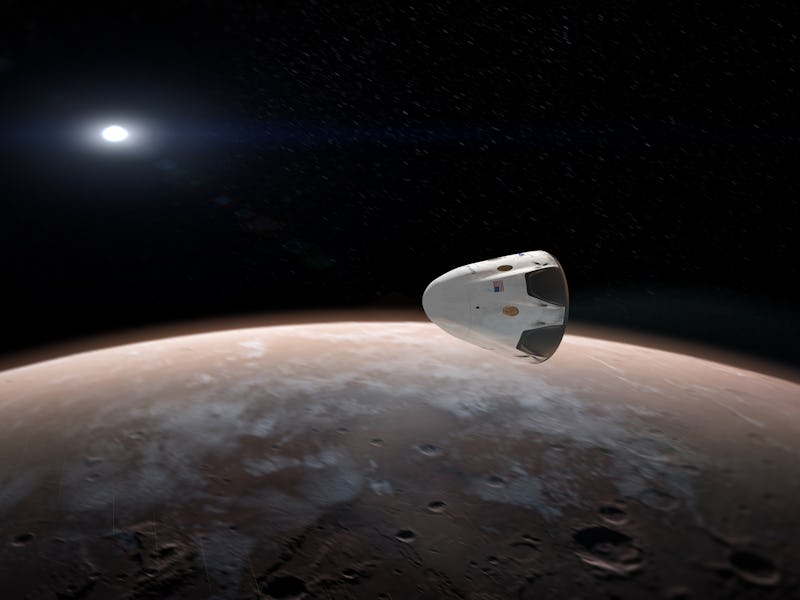NASA Has a Good Reason to Be "Particularly Excited" About SpaceX's Mars Mission
NASA thinks a partnership with SpaceX is the smartest way to make it to the Red Planet.

On the heels of today’s big announcement that SpaceX will attempt to make it to Mars by 2018, NASA has quietly reminded everyone that it too is playing a part in getting us to the Red Planet. In a post on NASA’s blog — yes, the federal agency still blogs — deputy administrator Dava Newman writes that this new SpaceX venture is a partnership between the space exploring enterprises.
“Among the many exciting things we’re doing with American businesses, we’re particularly excited about an upcoming SpaceX project that would build upon a current ‘no-exchange-of-funds’ agreement we have with the company,” writes Newman.
The agreement Newman is referring to here is a Space Act Agreement, which essentially is a legal contract that allows NASA to work with an entity that it feels can successfully further its initiatives. (NASA currently has 700 agreements with more than 120 international partners.)
What this means in light of SpaceX’s Red Dragon project is that NASA will offer tech support to the privately funded company in exchange for Martian entry, descent, and landing data.
The relationship between NASA and SpaceX, while profitable, isn’t new: SpaceX has been a crucial part of resupply missions — the Falcon 9-propelled Dragon spacecraft has, among other things, brought the International Space Station over 4,400 pounds of supplies, a Bigelow Expandable Activity Module, and returned to NASA with scientific samples.
This mission to Mars has been in the works for sometime as well — in a 2012 paper co-authored by NASA’s John Karcz and SpaceX’s Steve Davis, they discuss the “feasibility of using a minimally-modified variant of a SpaceX Dragon capsule on a low-cost, large-capacity, near-term, Mars lander for scientific and human-precursor missions.”
At the time of writing, Karcz and Davis believed the project was feasible — and this was a year before a SpaceX Dragon capsule even made it to the ISS for the first time.
The Red Dragon Mars mission will be the first test flight of the Dragon 2, which Musk says is “designed to be able to land anywhere in the solar system.” The 2018 mission will be unmanned, hopefully leading the way to humans to make it 35.8 million miles to Mars. If successful, it may pave the way to Musk’s deepest desire — a city on Mars.